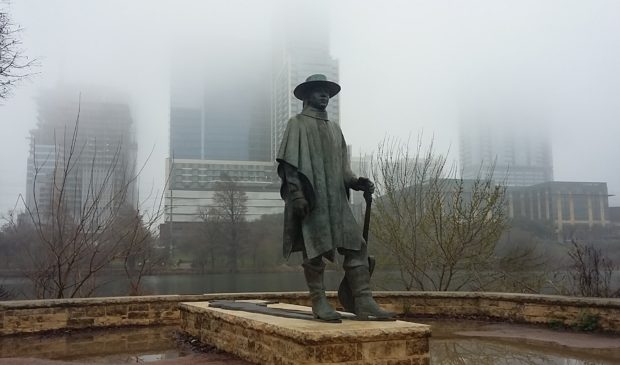EDC eyes push to make more city properties available for music, arts uses
Friday, April 30, 2021 by
Chad Swiatecki The city’s new economic development corporation will make a push this summer to identify city properties that could be repurposed into music venues or creative spaces, and has started to assemble the financial models for creating two arts spaces in the redevelopment of properties just south of the Congress Avenue Bridge.
During a presentation at a joint meeting of the arts and music commissions Tuesday, consultant Matthew Kwatinetz gave an update on plans for how the EDC will use money from two sources – the $12 million creative space bond and a slowly growing $15 million fund for iconic venue preservation – to purchase or develop arts and music spaces around the city.
The presentation covered most of the procedural steps that will be carried out following the release next month of a request for proposals for venues or organizations interested in using some of the bond money voters approved in 2018. The two commissions and city staffers have spent the two-plus years since establishing the criteria that will help decide how that money is allocated, with heavy emphasis on diversity, equity and inclusion as well as addressing areas of East Austin where music and arts spaces are under acute pressure from rent increases or redevelopment.
Kwatinetz said the RFP is expected to take up to two months to receive all applications, and that city staffers will work concurrently to put together a second RFP for using city-owned properties throughout the area as the homes for arts and creative groups.
The initial RFP is anticipated to result in the city purchasing two existing venue properties that would be operated by current owners plus one other multi-use space operated by an umbrella organization and made available to up to a half-dozen arts groups.
Kwatinetz emphasized that the bond money does not have to be used to fund new construction, as had been suggested and rumored in some circles, and that the possible repurposing of existing city facilities for arts use would be a major help to addressing the affordability concerns affecting musicians and artists across the city.
“This does not preclude us improving existing assets or creating hubs out of existing assets … that is totally something that can happen as part of this and the idea of doing that acquisition is there are some spaces that could be lost and a better move would be for the city to acquire them,” he said.
“We’ve been making a request to try to get a hold of city-owned sites for a second RFP. Some of those have been mentioned in other resolutions and we’re working to try to unlock those and relocate some things into other facilities to create more (arts) spaces. That would be a very effective way to make dollars go further.”
Later in his presentation, Kwatinetz said it is expected the city would need to provide about $3 million to subsidize the cost of one music venue and another arts space – both between 4,000 and 5,000 square feet – in the proposed South Central Waterfront District. That subsidy is needed to cover the gap in square footage rental costs that an arts space could realistically pay compared to standard retail use.
City Council officially created the EDC in October after almost a decade of study and analysis about the best way for the city to create development projects that meet local needs around affordability but can be structured like private business deals. The newly formed body is still seeking members for some of its advisory committees, including the Cultural Trust Advisory Committee that will play a large role in the creative space endeavors.
Initial forecasts project that with the EDC in place to serve as a broker and handle other administrative roles for its projects, about $1 million in overhead will be saved from the creative space bond, with that money available for property acquisition costs.
After discussion on the application process for the initial RFP, Arts Commission Chair Jaime Castillo said interested groups need to structure their proposals around property acquisition and management that meets community needs rather than viewing it as a pool of grant money.
“In discussing the creative space bond fund we were talking about that it is not a granting program. It’s not just to apply for this money and build what you like,” he said. “We had to structure it in a way that would meet the (state) requirements around that money. Now that the Austin EDC is involved, it is taking on the role of facility manager and provides opportunities for cost savings and shared costs.”
Photo made available through a Creative Commons license.
The Austin Monitor’s work is made possible by donations from the community. Though our reporting covers donors from time to time, we are careful to keep business and editorial efforts separate while maintaining transparency. A complete list of donors is available here, and our code of ethics is explained here.
You're a community leader
And we’re honored you look to us for serious, in-depth news. You know a strong community needs local and dedicated watchdog reporting. We’re here for you and that won’t change. Now will you take the powerful next step and support our nonprofit news organization?



